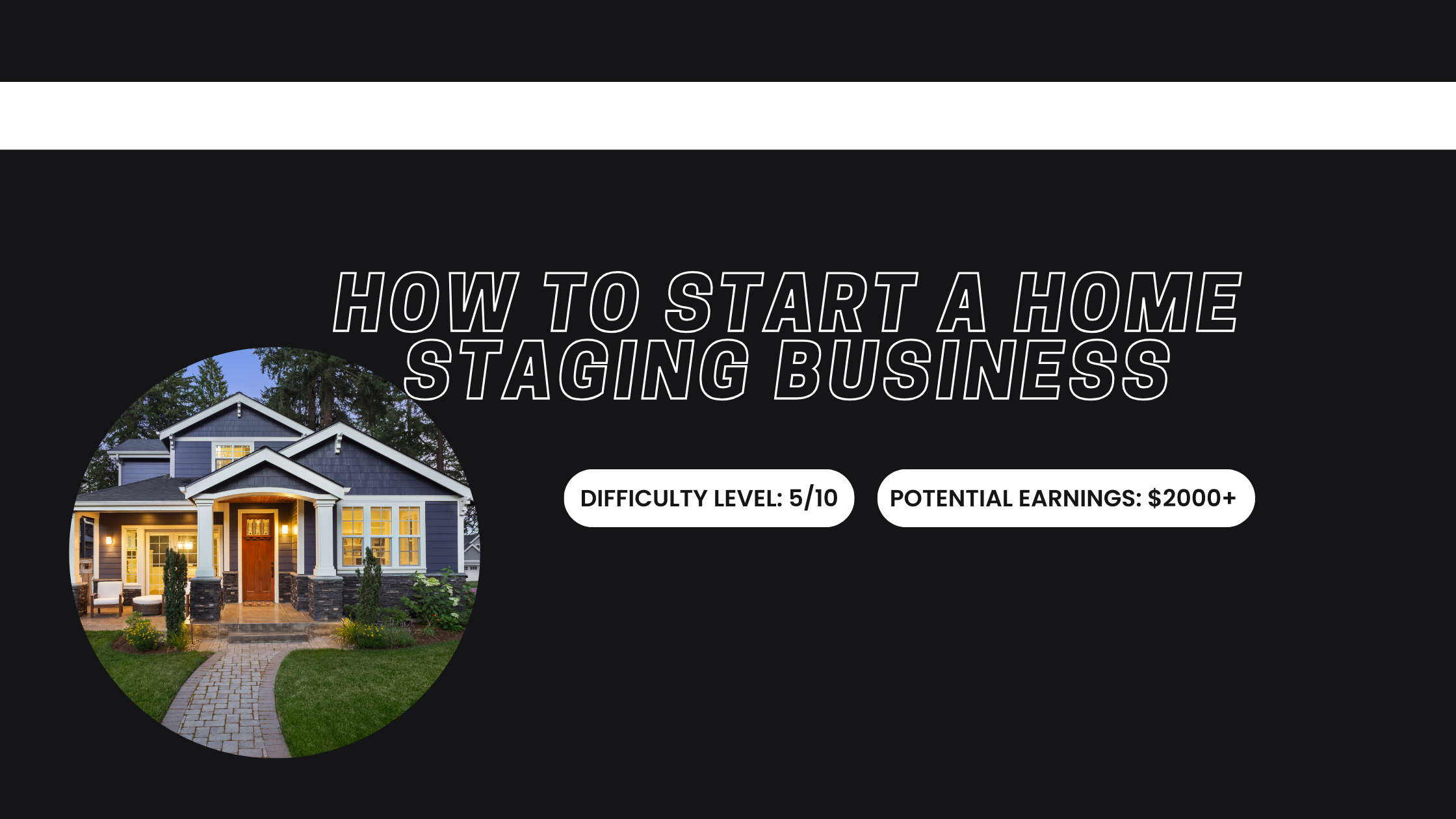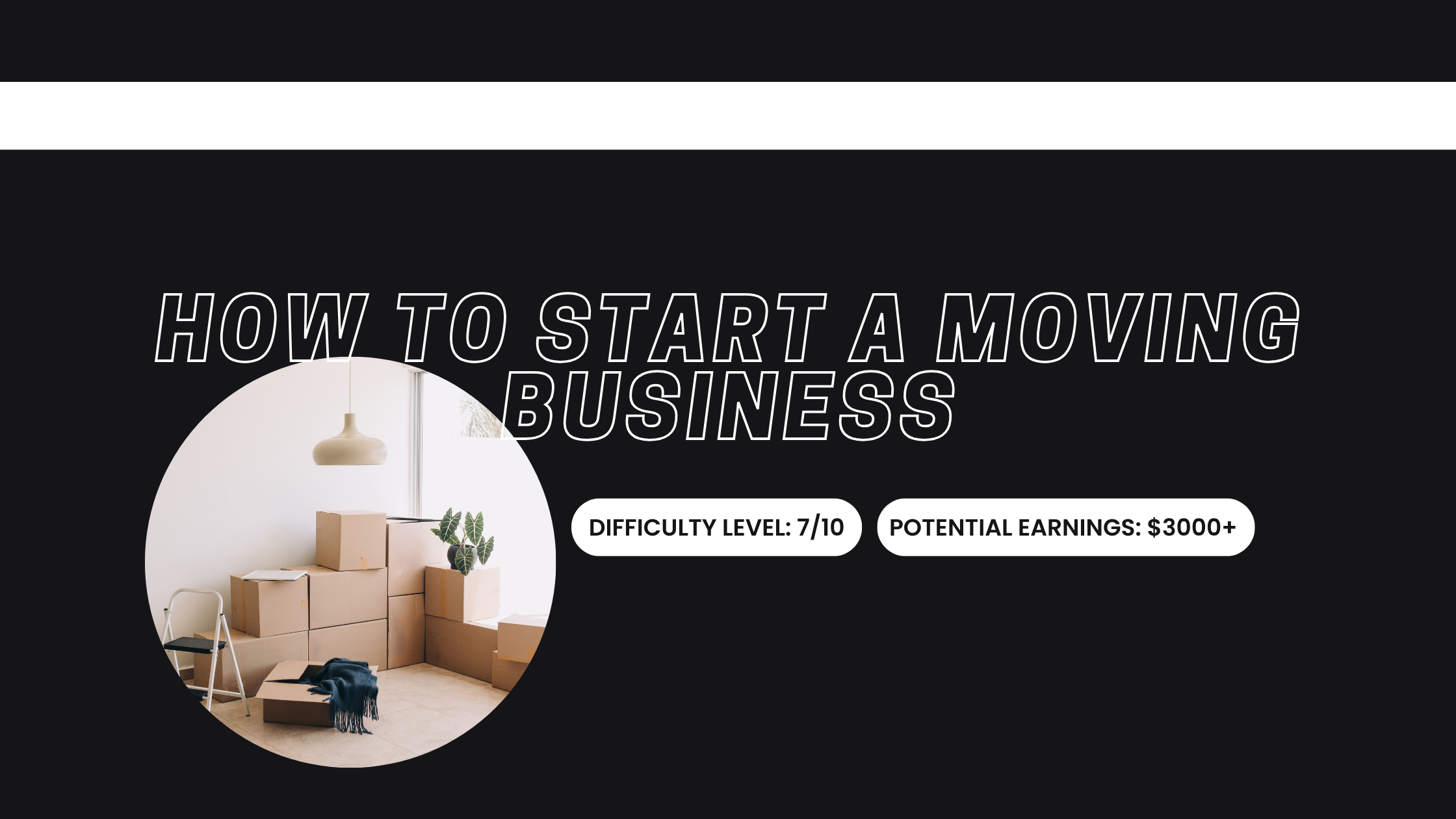Packing For Profits: How to Start a Moving Business
Time & Money
Difficulty
7/10
Weekly Time Commitment
20-25 hours
Earnings Per Month
$3,000 - $15,000+ (depending on the size of the business, number of clients, and service area)
Is Starting a Moving Business For Me?
Before looking at how to start a moving business, first determine if it's the right goal for you. Starting a moving business may be an ideal endeavor for you if you like physical work, are highly organized, and have a sterling work ethic. Are you fit, reliable, and able to manage a team of movers? If so, this business might be for you. Good customer service is required because clients may find moving stressful and get snappy with you at random moments. It's also not a suitable goal for anyone who dislikes working outside, or who struggles with lifting heavy objects.
Preparation: How to Start a Moving Business
First, get a moving truck and supplies (like dollies, furniture pads, straps and hand trucks). Find out about local regulations and get the required licenses and insurance - including liability and worker's compensation if you plan to hire employees. Understanding your pricing structure is also crucial. Create a detailed business plan that includes marketing plans, pricing models and the area you will serve. Start small, then grow your fleet and hire employees to help you manage jobs.
Execution
Obtain Necessary Licenses and Insurance
Before you get started lugging and lifting, you will need to make sure you have the proper licenses and insurance to run a moving business legally. There may be a local requirement for a business license if you plan on crossing state lines. This insurance protects you from liabilities like damage to clients property or injuries that occur during a move. Make sure to check local laws for subtle nuances that may affect you.
Purchase Reliable Moving Equipment
A moving truck is an investment, but necessary for professional services. You should also buy any apparatus you might need, such as moving blankets, furniture dollies, straps and packing materials. The right tools are essential for protecting your client's belongings and making the move as easy as possible. Start small with one truck and some basic tools and then scale up as your business grows.
Create a Pricing Structure and Services
A clear pricing structure is important for your moving business. Decide on whether you will charge by the hour, by the weight of the items, or if you will provide flat rate for certain types of moves (local or long-distance). Account for additional costs such as fuel, truck maintenance, and labor, and bake these into your costs. Also consider offering other services like packing, unpacking, or furniture assembly, to generate additional revenue streams.
Market Your Services
When your business is set up, get the word out. Make a booking system on your website and advertise in local online directories. Use social media to share client testimonials, before and after photos, and special promotions. Ask satisfied customers for reviews - word of mouth is the best marketing. Also hand out flyers in local neighborhoods or work with real estate agents and property managers to refer clients to you.
Develop a Team and Workflow
As you gain more clients, you’ll likely need a team to help you manage jobs. Start by hiring reliable movers who are physically fit and skilled in handling delicate items. Establish clear guidelines for your team regarding customer service, safety protocols, and professionalism. A well-trained team will ensure that your business runs smoothly and that your clients are satisfied with their experience.
Offer Excellent Customer Service
Moving can be a stressful experience for clients, so providing top-notch customer service is essential. Always communicate clearly, keep clients informed about the status of their move, and arrive on time. Handling fragile items with care and being attentive to clients’ needs will set you apart from competitors. Respond promptly to inquiries and follow up after the move to ensure the client was satisfied.
Scale Your Business
As your moving business grows, look for opportunities to expand. This could mean purchasing additional moving trucks, hiring more employees, or extending your service area. You can also expand your offerings to include storage solutions, long-distance moving, or specialized moves for items like pianos or antiques. Scaling strategically will help you meet increased demand and increase your revenue over time.
Bumps In The Road
Managing Seasonal Demand Fluctuations
Moving businesses tend to experience a high volume of clients during peak seasons, such as summer and weekends. However, demand can drop during off-peak seasons, especially in winter. To manage these fluctuations, plan for slow periods by saving a portion of your earnings from busier months or offering discounts or promotions to attract clients during quieter times. You could also expand your services to offer year-round services like packing and organizing.
Dealing with Damaged Goods
Accidents can happen during a move, and sometimes items can be damaged in the process. To minimize this risk, invest in high-quality packing materials and train your team to handle items carefully. Be sure to have liability insurance to cover potential damage claims. Having clear policies about damages and making sure clients are informed will help reduce confusion and maintain a good relationship.
Managing the Physical Demands of the Job
Moving heavy furniture and items can be physically demanding, which can lead to worker fatigue or injury if not managed properly. Make sure you have the necessary equipment and safety protocols in place to protect both you and your team.
Conclusion
If you're still wondering how to start a moving business, the most important thing is to get started. It's easy to waste time wondering about the what ifs, but in reality, getting started is the only way you will figure things out. For those who are willing to put in the work, starting a moving business is a worthwhile endeavor. So get stuck in!
Continue Learning

Home Staging
How to start a home staging business: build a portfolio, showcase your work, and connect with local realtors.
